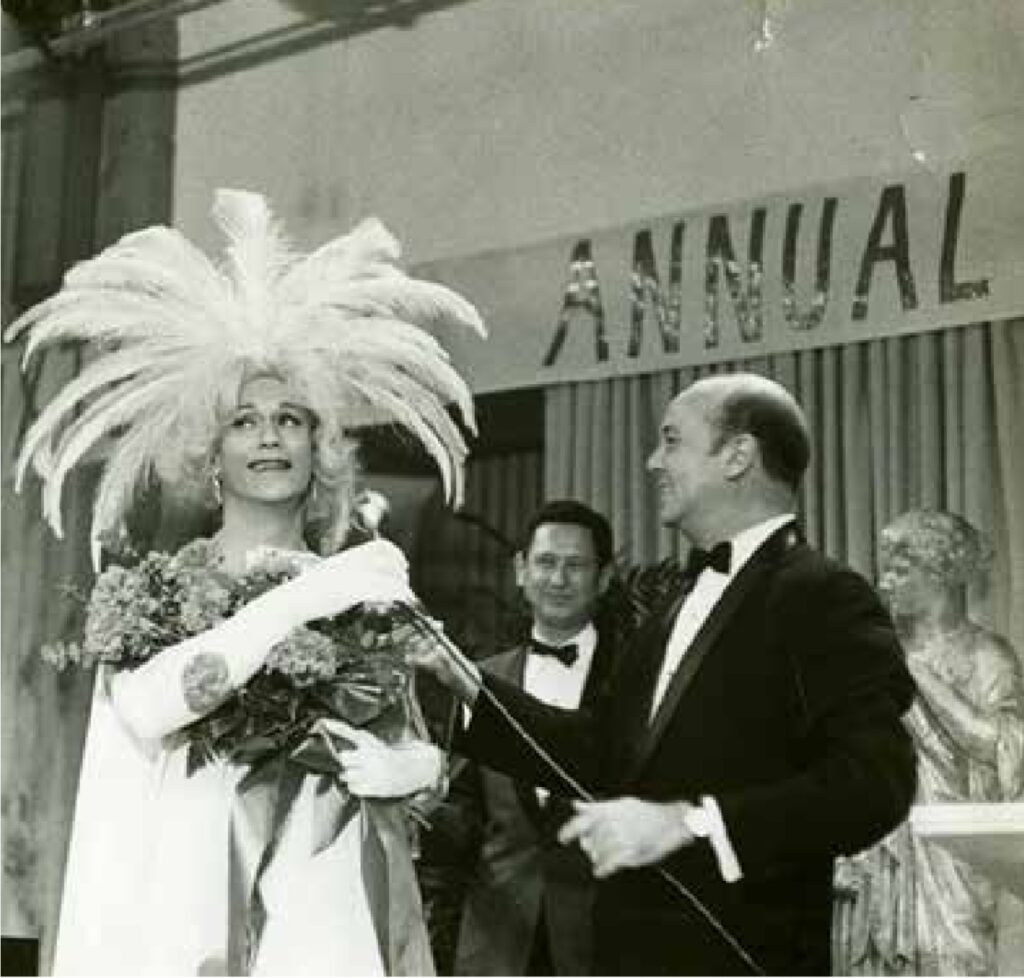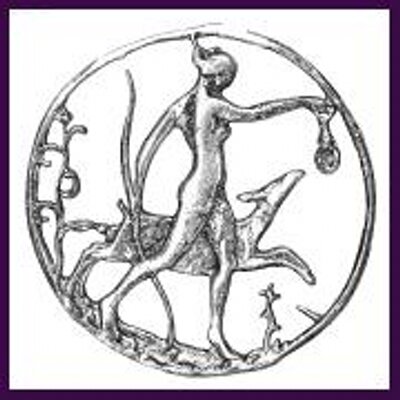By Christian Kelleher

This photograph was scanned by Brandon Wolf from Tom Osborn’s collection, but the location of the original copy is currently unknown. Digital scan courtesy of The Diana Foundation Records, Special Collections, University of Houston Libraries.
In 1953 Houston florist David Moncrief hosted a cocktail party for a group of gay friends in his midtown apartment to watch the first ever televised Academy Awards. When television reception of the broadcast failed, the bemused and disappointed guests turned on the radio to listen to the presentation. Undaunted, Moncrief the following year organized a second cocktail party, but this time as the broadcast was about to begin he gathered the group together to present his own award for best local performance —which historian and journalist Brandon Wolf describes as “most likely an amorous adventure” — to guest Virginia “Hub” Lankford. In a corner of the apartment stood a nearly life-size plaster statue of Diana, the Roman goddess of the hunt, which had come from the Sakowitz Department Store, where Moncrief’s roommate Curtis Wright headed the window design department. This was the birth of the Diana Awards and the beginning of what became The Diana Foundation.

Photo courtesy of The Diana Foundation Records, Special Collections, University of Houston Libraries.
In the 1950s and 1960s lesbian, gay, bisexual, and transgender Houstonians, like LGBT people everywhere, were forced into a largely hidden existence. The history of these early gatherings is predominantly preserved only in interviews by attendees. Thom Guthrie, who joined The Diana Foundation in later years, remembers, “This is all pre-Stonewall, and you didn’t want people to think you were gay because you could get arrested, you could get thrown in jail, you could be beaten. … You couldn’t be gay, that’s all there was to it.” Police would arrest people from the LGBT community who congregated in bars or write down license plate numbers from the parking lot and alert employers so they would lose their jobs. Private parties, often with gay men and lesbian women arriving as “couples” to deceive prying neighbors’ eyes, were one of the few places the community could gather unreservedly. The Diana Awards Show during this period was typically held in private residences, which made it hard to find space for the theater-style seating to mimic the Academy Awards that inspired the gathering.
Click here to read the full story, click on Buy Magazines to purchase a print copy or subscribe.

Founded in 1953, the Diana Foundation is nationally recognized as the oldest continuously running gay organization in the country.

Read about the collaborative study done by GLAAD and Proctor & Gamble showing that LGBTQ representation in media leads to greater acceptance by the general public.

 Follow
Follow